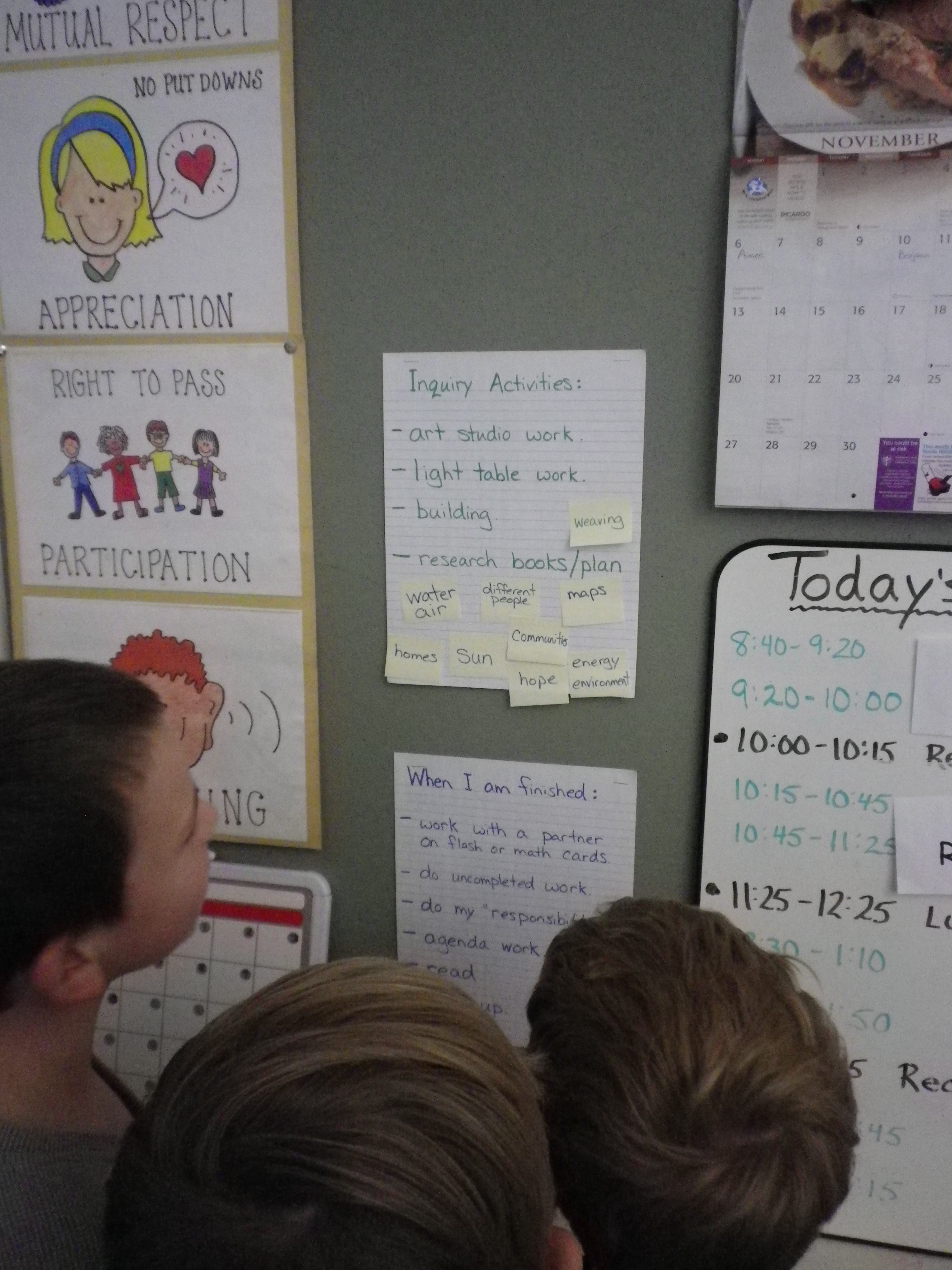As the busy school year develops, parent communication is very important. All parent(s) want to know what his/her child is learning at school. Having a 5/6 all boys class made me find ways to involve the boys and open the communication for the family and to the school. To describe my class a little, it all boys with over half of my class on IEPs; 1 gifted, 2 HSP kids, 1 Aspergers, some identified LD and some still on the wait list for an assessment. Also, many boys have anxiety which some have been medically diagnosed and others are not. Agendas are a routine we are working to develop both for parents to read and for students to use them.
Communication I have used:
– started a bi-weekly newsletter, written by the students;
The writers are a job assignment and hands regularly go up to take on the job. I do give some content to include such as curriculum information, projects and areas of curriculum we are working on. The writers are able to add their content also and I do give a final approval. Once edited and published, I was impressed that the boys all took them home, not one was left in the classroom!
– meetings for IEP;
Most of my parents requested a meeting to develop the IEP so I had to find some time to meet with approximately half of my class. I scheduled all meetings with student entry time as an end time and gave parents 20 minutes to discuss the IEPs. This allowed me to meet with all parents who had requested a meeting, leaving me enough time to input the added information into the student’s IEP. I did keep in mind if parents had other concerns to discuss, another meeting would have to be scheduled.
– use of the agenda;
Many parents have asked for me to communicate through the agenda. At times, it seems like limited communication, I still take the time to develop a routine where students place their agenda on my desk and I initial every morning. I do not sign agendas at the end of the day as I am trying to help the students to build the routine of utilizing the agenda. I do give agenda time at the end of the day and write on the board the evening’s homework and reminders. The students are aware I will look at the agendas the next day therefore the routine is beginning to develop. If there is a need to write a note in the agenda at the end of the day, I do so.
– phone calls home;
Although there are limited phones and phone lines in the large school I am in, I have developed a routine. I take one prep period a week to make phone calls giving parents an update. I try to call every parent once a month. If there are no concerns from myself or the parents, I start to give strategies to help with homework routine and learning skills. I also inquire about items getting home and inform parents about the class newsletter used as my way to keep parents updated.
– parent meetings;
Many parents have been calling to set up meetings. I am in an involved parent community; this is the norm in my school. Again, due to the early start of the year, I schedule the meetings with an entry time as the end point (i.e. 20 minutes before school or at the end of lunch). Some of my parents are colleagues and I do schedule those meetings for after school. All meetings have gone over 20 minutes but we are also discussing education related issues not just the colleague’s child.
– email;
I do not give out my email unless it is asked for. If parents do email me, my email reply consists of a simple acknowledgement of the concern and asking to set up a phone call meeting or face to face meeting to discuss the concern. Email is very easy to misunderstand and often I am in rush to read all my emails and do not have the time to finely craft an email response to a parent’s concern. If you do decide to use email, please save your email in draft and take another look, either a few hours later or the next day. Often, a discussion with an experienced colleague or time away from the concern gives us a different perspective.
What I have done are just examples of parent communication and have changed for me based on the school I am in or the students in my class. In some schools I have seen parents daily, even in upper junior grades, regular parent communication is quick. You have to do what works for you and your community. Most of all, remember to document your parent communication. Get some labels, print off a sheet with all the students name, record the parent communication and stick it on a paper in your communication binder.



